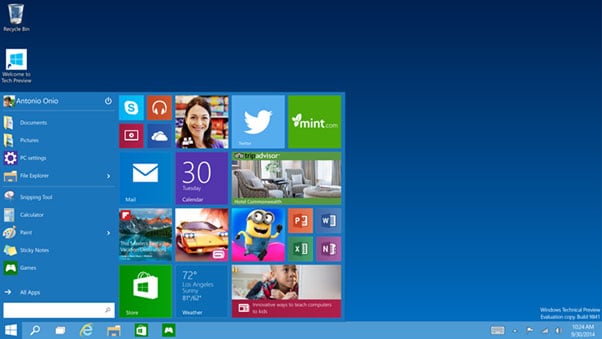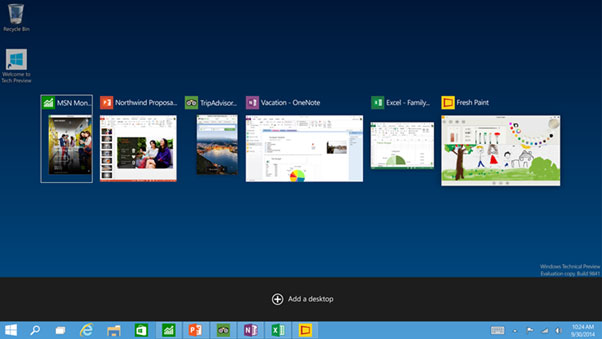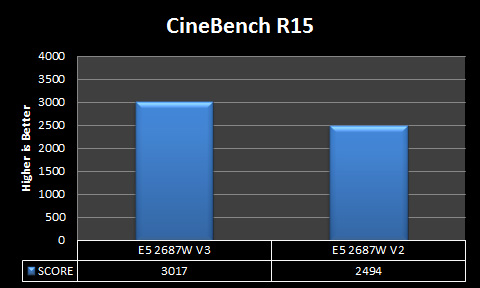SCANZONE
26.09.14 | ISSUE 23
Hello and welcome to the September issue of ScanZone. This month has been another manic one, with the big boys of the PC industry, NVIDIA and Intel launching major new products. NVIDIAs new products are two new super-fast, ridiculously efficient graphics cards while Intel has added yet more cores, cache and DDR4 memory to its already market-leading Xeon processors. Read on to find out more about how these exiting new products and others will reinvigorate your systems.

1. NVIDIA launches new uber efficient graphics cards
Unless you’ve been living under a rock the last few months it’s been pretty obvious that NVIDIA was getting ready to launch its new gen graphics cards. Last Friday NVIDIA finally revealed everything; two new cards, the GeForce GTX 970 and the 980.
Both cards are based on the same Maxwell architecture as the GTX 750 Ti that launched earlier this year. Maxwell differs substantially from the earlier Kepler architecture that the GeForce 700 series GPUs were based on, with a special focus on efficiency. For instance, on paper you could be forgiven for questioning how NVIDIA could think that the 980 could replace the 780 and 780 Ti as it has in many ways fewer resources.
For instance, the 780 has 2304 stream processors, 192 texture units and 288GB/sec of memory bandwidth while 980 has 2048 stream processors, 128 texture units and 224GB/sec of memory bandwidth. However, Maxwell has a very different structure to Kepler, with each GPC (graphics processing cluster) having four SMMs instead of three, meaning that each SMM is responsible for fewer stream processors, 128 versus 192. Each SMM also has its own instruction buffers, register files, dispatch units and schedulers, whereas each cluster of three SMMs had to share a single set in Kepler. Maxwell also features a combined texture and L1 cache and a massively expanded L2 cache, quadrupled from 512KB to 2MB. In addition, NVIDIA has doubled the ROPs (render outputs) from 32 to 64, which should have a massive effect when running games with lots of AA and/or at super high resolutions.
The end result of this silicon wizardry is that despite having fewer front end resources the 980 actually outperforms the 780 and even the 780 Ti in most games. What’s more, the 980 does it far more efficiently, with a TDP of just 165W versus the 250W of the older GPUs. What this means in real terms is that you can use a lower wattage (cheaper) PSU and with so much less waste heat being dumped into your PC from the graphics card, you can squeeze the 980 into much smaller cases than its predecessors.
For instance, in its review HEXUS measured its 980 test system drawing just 46W when idle and 198W when gaming versus 60W and 341W respectively for AMD’s fastest single-GPU card the 290X. The 980 also runs about 10C cooler than the AMD card and a significant 17dbA quieter too. Throw in all the usual NVIDIA goodness of recent years such as easy game tweaking with GeForce Experience, game recording with Shadowplay and game streaming onto a Shield tablet and it’s clear that the 980 is an extremely clever bit of engineering.
The only caveat I would warn you about is that due to the new internal layout, Maxwell GPUs such as the 980 aren’t actually as fast at dual-precision calculations as Kepler cards, so if you’re running a workstation or GPGPU applications a Kepler card such as the Titan Black still retains its performance crowd. However for gamers, with an average price of £450 inc VAT, the 980 is so well priced it easily takes pride of place as the most desirable high-end gaming graphics card right now.
The 980 has a little brother the 970 too and it’s also worthy of attention. The 970 has 1,664 stream processors as opposed to the 980s 2,048, but otherwise has the same uber-efficient Maxwell architecture and at £260 inc VAT easily surpasses its predecessor the 770 and AMDs equivalent card the 290 in terms of performance, power efficiency and quietness. In fact, in many ways the 970 is more desirable than the 980 as its offers close to 90% of the bigger cards performance at a much lower price.
The new Maxwell GPUs aren’t only incredibly efficient though, as NVIDIA has used the launch to introduce several new features. Dynamic Super Resolution is designed to boost image quality in games by rendering them at a super high resolution before downsampling to your monitor.
Obviously it’s only sensible to enable DSR in games that already run at a very high frame rate as increasing the render resolution gives the GPU a lot more work to do, but it can produce much sharper images than simply piling on more AA and AF. DSR is part of GeForce Experience or can be manually configured in the NVIDIA control panel.
Apart from the dual-GPU AMD R9 295X2, which retains its performance crown, the new GTX 970 and 980 cards from NVIDIA based on the Maxwell architecture further solidify the company’s leadership in the gaming GPU market. The two cards may not have ushered in a new era in performance, but both GPUs are far more efficient than their predecessors, delivering silky smooth frame rates while consuming almost half the power of their competitors, leading to quieter, cooler running PCs.

Unlike Windows 8, Windows 10 doesn’t feel two different OSes badly stitched together either, as Windows apps no longer open by default in a full-screen mode either, but can run in resizable windows alongside desktop applications.
Snap has been enhanced too, with the ability to automatically resize up to four, rather than two applications, for simultaneous display. If that’s not enough workspace for you Windows 10 has taken the Linux idea of multiple virtual desktops, all accessible via a new task switching menu that displays in greater clarity what you’re running.

Windows 10 is shaping up very nicely indeed and after the desktop unfriendly design of Windows 8 it’s great to see Microsoft paying attention to its core market again. If you can fancy giving Windows 10 a whirl you can sign up to try the free beta atpreview.windows.com.

2. Intel upgrades Xeons to Haswell giving massive performance boost
Intel upgraded its high-end consumer platform to Haswell last month, introducing the company’s first eight-core desktop CPU, a new chipset and support for DDR4. This month, it’s time for Intel’s workstation and server Xeon platform to get the Haswell treatment.
Codenamed Grantley, this new platform upgrades the underlying CPU architecture from Ivy Bridge to Haswell, giving a small boost to IPC (instructions per clock) and a huge boost to power efficiency. The Haswell architecture also introduces several new instructions, such as AVX 2.0 which should benefit enterprise applications such as databases. Intel has also increased the QPI speed from 8GT/s to 9.6TG/s, which will help boost communication speeds in a dual-processor system. There’s also a new chipset, C612, which compared to its predecessor C602 adds native support for USB 3 and has ten SATA 6Gb/s ports versus just two on the older chipset.
As with its desktop counterpart, Grantley also adds support for DDR4 memory. However, in the case of Grantley this is likely to be much more beneficial, as server workloads tend to be much more memory intensive than consumer software. For example, while previous generation Ivy Bridge Xeons supported 1866MHz DDR3, the new Grantley Xeons support 2133MHz DDR4. As an added bonus, DDR4 also runs at a lower voltage than DDR3, 1.2V compared to 1.5V, so it consumes less power and runs cooler.
The first batch of Grantley Xeon Processors to be released come from the E5 1600 and E5 2600 families and can be identified from their predecessors by the addition of a V3 at the end of the model number. As always, the E5 1600 V3 processors are for single-processor workstations while the E5 2600 V3 processors can be paired up in a dual-processor system.
As you’d expect with any new Xeon launch Intel has ramped up the number of cores and cache again. For example, the flagship server chip, the E5 2699 V3 has 18 cores running at 2.3GHz plus 45MB of cache, compared to the previous generation flagship server chip, the E5 2697 V2 which had 12 cores running at 2.7GHz plus 30MB of cache. There are also a huge variety of other new V3 Xeons in various flavours such as quad-core, 6-core, 8-core, 10-core, 12-core, 14-core and 16-core depending on your budget and performance requirements.
For instance, the new flagship workstation chip, the E5 2687W V3 has 10 cores running at 3.1GHz plus 25MB of cache compared to its predecessor, the E5 2687W V2 which had 8 cores running a 3.4GHz plus 25MB of cache. As CPU frequency is often more important in workstation applications than the number of cores we decided to put these two CPUs head to head in the CPU rendering benchmark Cinebench, which is based on the popular animation software Cinema 4D which is used by many professional film makers.

However, as you can clearly see in the graph above, the V3 model of the E5 2687W absolutely demolishes the older V2 model in Cinebench, completing the render 21% faster, saving a huge amount of time in a film production environment.
The new V3 versions of the Xeon E5 1600 and 2600 families based on the Grantley platform once again mark another massive leap forward in performance for professional IT, enabling you to do more in less time. To find out more visit the Scan website where you can view the whole range of Xeon Processors, DDR4 Memory, Motherboards plus our fully configurable 3XS Workstations and Servers.

3. AMD’s new R9 285 graphics card takes on the middle ground
AMD has quite a complicated GPU line up right now with several different GPU architectures, such as Hawaii and Tahiti being used to power the higher end models in the Radeon R9 family while the lower-end R5 and R7 models are powered by much older architectures that have been recycled from even older cards.
You can therefore understand the wave of cynicism that greeted the new R9 285 that AMD announced earlier this month. This cynicism was further enhanced by an early leak of the specs which at first glance appear to be inferior to the older and cheaper 280X. That’s because the older 280X has a 384-bit memory controller and the new 285 a less sophisticated 256-bit memory controller.
However, the 285 GPU actually has a different GPU architecture to the 280X. This new architecture, codenamed Tonga Pro, has more in common with the Hawaii architecture of the 290 and 290X cards. For instance, compared to the 280X’s Tahiti design, Tonga can store data in an apparently lossless compressed format in the frame buffer, which explains why AMD thought it could get away with using a less sophisticated memory controller on the 285. Tonga also has an improved setup engine that should improve efficiency, especially in scenes with lots of complex geometry.
Because of these architectural improvements, despite only having 1792 steam processors, the same as a 280 but much less than a 280X which has 2048, the new 285 is a solid performer. For example, most reviewers found that it delivers similar frame rates to a 280 or GeForce GTX 760.
However, at this stage it’s hard to fully recommend the R9 285 as you can pick up a great deal on a R9 280 right now as they’re going end-of-life so board manufactures are clearing their inventory. Alternatively, a cooler-running and quieter GTX 760 can be had for a good £20 less than the R9 285. Still the R9 285 is a good step in the right direction for AMD and it’ll be interesting to see what its new architectural improvements might do for the performance of a higher-end GPU.

4. Corsair lights up your desk.
I already reported in the June issue of ScanZone that Corsair was working on a new series of customisable illuminated keyboards, and I’m now pleased to announce that these products are here. The two new keyboards, the 104-key K70 and 122-key K95 feature a new type of Cherry MX mechanical switch that mounts the LEDs next to the switch rather that on it, creating a much more consistent lighting effect than other illuminated keyboards.
Each individual key can display 16.8 million different colours or be programmed to change colour when touched. You can even program the keys to change colour as you press other keys around them in a very distinctive wave pattern. As it’s quite hard to explain and describe how good these effects can be in text so I’d strongly recommend checking out this Video on Corsair’s website for more info on what can be achieved. In addition to these fully programmable models Corsair is also producing simple backlit versions with a red or white backlight at a lower cost.
If you’ll forgive the expression, the key thing about the K70 and K95 isn’t just the programmable lighting effects, but that they’re also damn fine mechanical keyboards. Depending on your tastes Corsair has made both models available with a variety of switches, using the standard Cherry colour code. For instance, blue switches require the most amount of pressure to activate and are popular with typists although they tend to make a loud clicking noise. In contrast, red switches require less force and so provide a smoother and quieter experience. Brown switches require the same force as red switches but activate with a noticeable bump, making them a popular choice with gamers and professional users.
Starting at £109 inc VAT for a single colour backlit version and going up to £159 inc VAT for a fully programmable model, you can check out the whole range of new Corsair K70 and K95 keyboards on the Scan website.

5. IPS G-Sync monitors on the horizon
As regular ScanZone readers will know I’m a massive fan of NVIDIA’s frame rate regulating G-Sync technology that eliminates tearing and stuttering in games. However, while I’ve salivated at the release of each and every new G-Sync monitor, what I’m really waiting for is a higher res G-Sync monitor with an IPS panel. I’ve always owned IPS monitors myself because they have far superior colour reproduction and wider viewing angles than TN monitors.
This month it looks like such a monitor may finally be on the horizon, with the announcement by AU Optronics of a new AHVA panel, which has similar performance to an IPS panel and can run at the 144Hz required by G-Sync. The new panel, the M270DAN02.3, is 27in with a native res of 2560 x 1440, the ideal resolution for a high-end monitor as most games still don’t actually take advantage of 4K.
The M270DAN02.3 is scheduled to enter production this month so hopefully we might see retail branded IPS monitors with G-Sync before the end of the year. If so, I’ll definitely be running downstairs to the warehouse to check them out in person.

6. A trio of new Corsair cases
I don’t tend to write many stories about new cases in ScanZone because to be frank I find it hard to get excited about the vast majority of new rectangular black boxes that get launched every year. That said, Corsair, once purveyor of many a rectangular black box is launching three new cases this month that break the mould.
The first and in my opinion most desirable case is the Graphite 780T, a full tower monster that is equally at home housing an air-cooled or water-cooled PC. Available in white, black or yellow, the 780T eschews all efforts to be rectangular and instead almost every surface is gently curved, the end result being a real joy to behold. Arguably the best looking 780T is the white version, which has a nicely contrasting black front and interior, but the black and yellow models also have their charms. Starting at £137 inc VAT the 780T isn’t cheap, but it’s much more curvaceous than most full tower cases without being overly ostentatious. You can check out all three 780Ts on the Scan website.
Next up on the roster of new cases is the Air 240, a micro-ATX version of the incredibly popular Air 540. Like its larger brother, the 240 is a cube case with two inner chambers, one for the motherboard and the other for the PSU and drives. Unlike the 540 however the 240 has been cleverly designed so that its equally happy sat so that window is on the left side or rotated so that the window faces upwards. You can pre-order the 240 in either black or white on the Scan website for £69 inc VAT.
The final new interesting case design being introduced by Corsair is the Graphite 380T, a cube-like mini-ITX case complete with carry handle and ski-feet that make it look more like a robotic submarine than a PC. Available in black, yellow and white the 380T is a fully paid up member of the ‘far larger than it needs to be mini-ITX case fraternity’, being larger than most micro-ATX cases. That said, it does have lots of room for fancy water-cooling and graphics cards. Starting at £99 inc VAT you can view the three different 380Ts on the Scan website.

7. Velocity 2014 winners announced
Scan has joined forces with Intel to offer UK based film makers and other digital artists the chance to demo their work to some of the industry’s leading artists and producers, such as film maker Philip Bloom and artist Trish Meyer, plus win some fantastic prizes.

The voting has finished in all categories yet, but congratulations go out to Mat Thompson for winning the Film/Video category with his video short ‘A Sting in the Tale’. Lead judge Philip Bloom said ‘Any competition which lets people show what they are doing for real, rather than for a competition brief, has got to be a good thing. Mat’s entry was a really fascinating story that left me wanting more. I found it astonishing! Having never heard of it I had to look it up as I wasn't sure if this was a ‘mockumentary’. Nicely constructed and shot. Really lovely job Mat’.
Congratulations also go out to William Allum for winning the Motion Graphics / HDR Photography competition. Lead judge Trish Meyer said that ‘It was refreshing to see so many different styles and techniques used in projects ranging from personal to commercial. I was particularly impressed with the professionalism of William Allum’s "Showreel" – the Grand Prize winner – as it covered a wide range of 2D and 3D motion graphics and VFX, and included some fascinating breakdowns of how many of the effects were constructed’.
You can view the winning entries and find out more about Velocity 2014 on the Scan website.


A powerful, highly upgradeable graphics workstation
Last month Intel launched its new Haswell E platform comprising the Core i7 5000 series of 6 and 8-core CPUs to critical acclaim. Since the launch we’ve had three more system reviews published, the first by PC Pro magazine.
PC Pro reviewed the 3XS GW-HT20, a high-end graphics workstation comprising the new 8-core Intel Core i7 5960X CPU and the new NVIDIA Quadro K4200 graphics card. The review is extremely positive, giving the 3XS GW-HT20 a great score of 6 out of 6 for Performance and 5 out of 6 Overall plus a Recommended Award.
PC Pro described the 3XS GW-HT20 as 'Scan harnesses the might of Intel's 8-core Haswell-E CPU, and the result is a monster of a graphics workstation. For some, power is an aphrodisiac. For others, it's an everyday necessity, and that's a need Scan's latest workstation, the 3XS GW-HT20, is built to serve. Rallying a suite of high-end componentry around the latest eight-core Extreme Edition CPU from Intel, the 3XS GW-HT20 stakes a claim as the most powerful graphics workstation we've ever seen. And fly it certainly does – the performance on offer here is breathtakingly quick. The combination of obscene multithreaded performance and professional-class graphics easily justify the 3XS GW-HT20's appeal for professional users. If you're in the market for a powerful, highly upgradeable graphics workstation, the Scan 3XS GW-HT20 is a great buy.
You can read the full review online on the PC Pro website.
An incredibly versatile, powerful machine
The second Haswell E system review was published by PC Format, which took a look at our 3XS X99 Carbon high-end gaming PC. The key specs of this whisper quiet gaming PC include the 6-core Core i7 5820K overclocked to 4.25GHz, GTX 980 graphics and 500GB SSD all housed inside the gorgeous new Corsair 780T case in white.
PC Format described the X99 Carbon as ‘Beauty isn’t just skin deep when it comes to this gorgeous Haswell-E system’, summing up the review with ‘Scan has created an incredibly versatile, powerful machine with the X99 Carbon’ and a score of 4.5 out of 5 plus a Gold Award.
You can read the full review of the 3XS X99 Carbon in the November issue of PC Format.
Good for 4K gaming and multi-threaded workloads
Custom PC published our third and final Haswell E system review this month, taking a look at our 3XS X99 Cyclone SLI ultra-high-end gaming PC.
The X99 Cyclone SLI is a fully-watercooled PC comprising the 6-core Core i7 5820K overclocked up to 4.5GHz with a pair of overclocked GTX 780 Ti graphics cards, all housed in a Corsair 750D case with a custom Arctic White paint finish. Custom PC described the X99 Cyclone SLI as ‘If you’re looking for a high-end PC that’s good for 4K gaming and multi-threaded workloads, the Scan will be perfect’ giving the system a score of 92% and a Premium Grade award.
You can read the full review of the 3XS X99 Cyclone SLI in the November issue of Custom PC.
The overall workmanship of the GW-HTX35 is excellent
Graphics professionals are in for several treats at the moment with NVIDIA launching a new range of Quadro graphics cards last month and Intel launching a new range of Xeon processors this month.
For instance, the reviewers at 3D Artist took a look at our 3XS GW-HTX35 high-end graphics workstation this month, giving a score of 9 out of 10. The review describes the GW-HTX35 as ‘An ultra-high-end workstation with dual Intel Xeon processors and a powerful Nvidia Quadro K6000 graphics card. The overall workmanship of the GW-HTX35 is excellent – whip off the case panels and you’ll see all the connecting cables neatly tucked out of the way on the rear of the case, with nothing obscuring access to the motherboard. It performs brilliantly too, with a massive improvement in some tests over the GW-HTX30. If you have a genuine need for the performance of the 3XS GW-HTX35, then it’s likely your budget will stretch to it.’
You can read the full review in issue 72 of 3D Artist.
Scintillating application performance and decent gaming punch
If all these system reviews are a little bit too rich for your blood then perhaps the 3XS Z97 Performance GTX will be more to your liking. Comprising an overclocked Core i5 4690K, with GeForce GTX 770 graphics plus a 240GB and 2TB hard disk its one of our most popular gaming systems.
This month, Expert Reviews took a look at the Performance GTX, giving it an awesome review with a score of 5 out of 5 and a Best Buy award. The review describes the system as ‘The Scan 3XS Z97 Performance GTX showed scintillating application performance and decent gaming punch. The system is well put together and the inclusion of a sound card was a nice touch’ before concluding that it’s ‘great gaming performance make it a Best Buy-winning PC’.
You can read the full review online at Expert Reviews.




